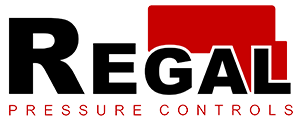
The role of washing machine water level controller
Washing machine is one of the indispensable home appliances in our daily life, which can help us wash clothes quickly and conveniently, saving time and energy. However, have you ever wondered how the washing machine controls the water level? Why doesn’t the washing machine overflow or run out of water? This is thanks to the water level controller of the washing machine, which is an important part of the washing machine, responsible for detecting and regulating the amount of water in the washing machine.
The Principle of Washing Machine Water Level Controller
The principle of the washing machine water level controller is actually very simple, it is to use the change of air pressure to sense the level of water. A washing machine water level controller generally consists of an airbag, an air hose and a switch. The airbag is located at the bottom of the washing machine and is in contact with the water inside the washing machine, the air hose connects the airbag to the switch, and the switch connects to a circuit to control the on/off switch of the water inlet valve and the drain valve.
When the washing machine starts to feed water, the water level gradually rises and the water pressure increases, compressing the air inside the airbag and increasing the air pressure inside the airbag, which is transmitted to the switch through the air tube. When the air pressure reaches a certain value, the switch will be triggered, cutting off the circuit, closing the water inlet valve and stopping the water inlet. When the washing machine starts washing or draining, the water level gradually drops and the water pressure decreases, the air inside the airbag expands, causing the air pressure inside the airbag to decrease, which is transmitted to the switch through the air tube. When the air pressure falls below a certain value, the switch recovers, turns on the circuit, opens the water inlet valve and continues to feed water. In this way, the washing machine can automatically adjust the water level according to different washing programs to ensure the washing effect and save water.
Advantages of washing machine water level controller
The advantages of washing machine water level controller are as follows:
Simple, practical and economical, no need for complex electronic components or sensors, only need an air bag, an air tube and a switch, can realize the control of water level, low cost and easy maintenance.
Accurate, sensitive and reliable, according to the actual water level in the washing machine, it can adjust the water inlet or drain in time, avoiding the water level is too high or too low, which will affect the washing effect or cause waste or leakage.
Strong adaptability, according to different washing machine models, capacities, functions and washing programs, different water level standards and air pressure thresholds can be set to meet different user needs and preferences.
Disadvantages of washing machine water level controller
The disadvantages of washing machine water level controller are also as follows:
It is easy to be affected by dirt, scale, impurities, etc., which leads to the blockage, breakage or malfunction of the air bag, air tube or switch, affecting the accuracy and stability of the water level control.
Easily affected by temperature, humidity, climate, etc., leading to changes in air pressure, affecting the sensitivity and reliability of the switch.
Easily affected by external forces, vibration, impact, etc., resulting in deformation, loosening or breaking of the air bag, air tube or switch, affecting the normal operation of water level control.
Use and maintenance of washing machine water level controller
In order to ensure the normal use and prolong the life of washing machine water level controller, we should pay attention to the following points:
Clean the inside of the washing machine regularly to remove dirt, scale, impurities, etc., and keep the air bladder, air tubes and switches clean and unobstructed.
Regularly check the connection and fixing of the water level controller of the washing machine to prevent it from loosening, breaking or falling off, which will affect the effect of water level control.
Avoid using water that is too hot, too cold, too hard or too dirty to prevent damage to or failure of the air bladder, air hose and switch.
Avoid applying excessive external force, vibration, shock, etc. to the washing machine to prevent deformation or damage to the air bladder, air hose and switch.
If you find any abnormality or malfunction of the water level controller of the washing machine, contact the professional maintenance personnel in time for testing and repair, do not disassemble or replace it by yourself, so as not to cause greater damage or danger.
Washing machine water level controller is an important part of the washing machine, it can be based on the water level in the washing machine, automatically adjust the water inlet or outlet, to ensure that the washing effect and save water. Its principle is to use the change of air pressure to sense the water level, its advantages are simple, practical, economic, accurate, sensitive, reliable, adaptable, its disadvantage is easy to be affected by dirt, scale, impurities, temperature, humidity, climate, external forces, vibration, impact and so on, affecting the accuracy and stability of the water level control. In order to ensure the normal use and prolong the life of washing machine water level controller, we should pay attention to regular cleaning, checking, maintaining and repairing the washing machine water level controller, avoiding the use of unsuitable water source and exerting excessive external force on the washing machine.
